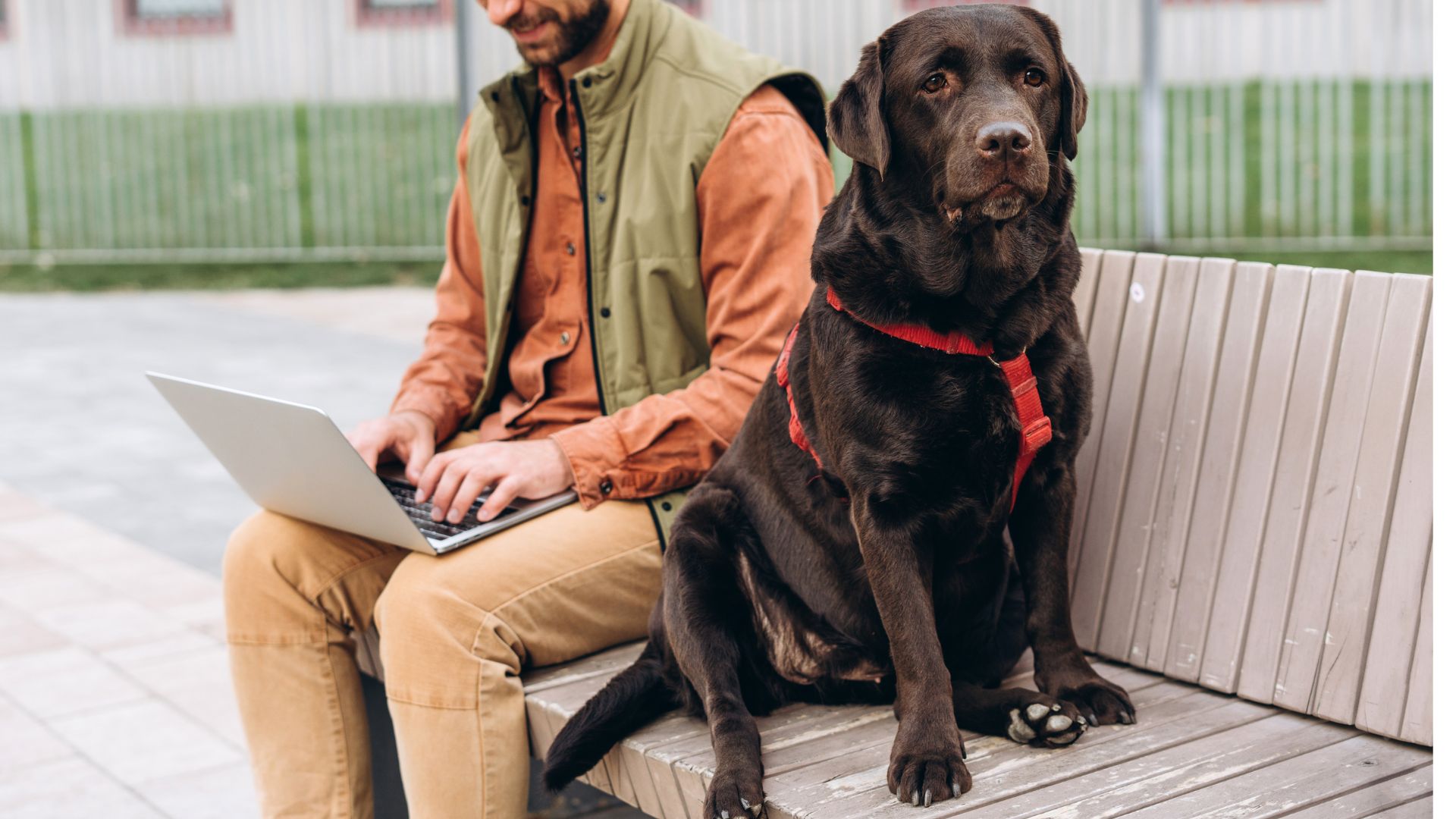“Low-maintenance” dogs often share traits like independence, calm temperament, lower grooming needs, and modest exercise needs. These qualities make them especially suitable for busy professionals who spend long hours at work.
When your schedule keeps you away, the right breed can ensure your dog feels content rather than stressed. Some breeds are naturally adaptable and comfortable with alone time, while still offering affection when you’re home.
In this guide, we’ll explore the 9 ideal, independent, calm, and quiet dog breeds for busy owners. Each one combines a mix of easygoing personality and low-maintenance care that makes life simpler for both owner and pup.
You’ll discover how these breeds balance independence with companionship, fitting seamlessly into a hectic lifestyle. Think of them as loyal friends who don’t mind your career grind.
Whether you’re apartment-bound or in a larger home, these dogs prove that a busy schedule doesn’t mean sacrificing canine love.
Best Dog Breeds When You Work Long Hours
1. Greyhound
If you want a dog that practically majors in couch-potato studies, meet the Greyhound. Despite their racing history, they are famously lazy at home, making them one of the easiest companions for professionals with long workdays, according to AKC. They’re quiet, graceful, and surprisingly low-maintenance.
Grooming needs: Minimal; short coat requires weekly brushing
Energy level: Low indoors, quick bursts outside
Exercise needs: One or two short walks or sprints
Separation anxiety signs: Pacing, whining, or destructive chewing
Training a Greyhound to live independently is as simple as teaching them to enjoy routine downtime. Crate training, puzzle feeders, and comfy dog beds help them feel secure. Keep a safe chew toy or snuffle mat handy so they stay mentally engaged while you’re away.
2. Basset Hound
Looking for a dog who could win a gold medal in afternoon napping? The Basset Hound is your droopy-eyed, long-eared solution to balancing long office hours with canine companionship. They’re affectionate but wonderfully content snoozing solo.
Grooming needs: Moderate; occasional brushing for shedding
Energy level: Low
Exercise needs: Daily slow walks
Separation anxiety signs: Excessive barking or howling
WebMD recommends that to help your Basset Hound thrive independently, focus on positive reinforcement and gentle training.
Provide cozy blankets, durable chew toys, and interactive feeders to keep boredom at bay. Because of their calm temperament, a predictable routine makes them feel safe and secure when left alone.
3. French Bulldog
If dogs could be called professional chillers, French Bulldogs would be running the company. Compact, quiet, and content with minimal activity, they’re a dream for professionals balancing long hours. Their charming personality makes evenings at home extra rewarding.
Grooming needs: Low; occasional brushing and wrinkle cleaning
Energy level: Moderate but short bursts
Exercise needs: 15–20 minutes daily
Separation anxiety signs: Clinginess, destructive chewing, or barking
Training a French Bulldog for independence means teaching them short, alone sessions early on. Leave them with orthopedic beds, food puzzles, and breathable crates for comfort. With the right enrichment, they adapt easily to a busy lifestyle while staying happy and healthy.
4. Cavalier King Charles Spaniel

If royalty had a designated “lap dog for busy people,” the Cavalier King Charles Spaniel would hold the crown.
They radiate charm and affection but are also remarkably adaptable, which makes them perfect for professionals juggling long work hours. Their easygoing nature keeps stress levels low for both pup and owner.
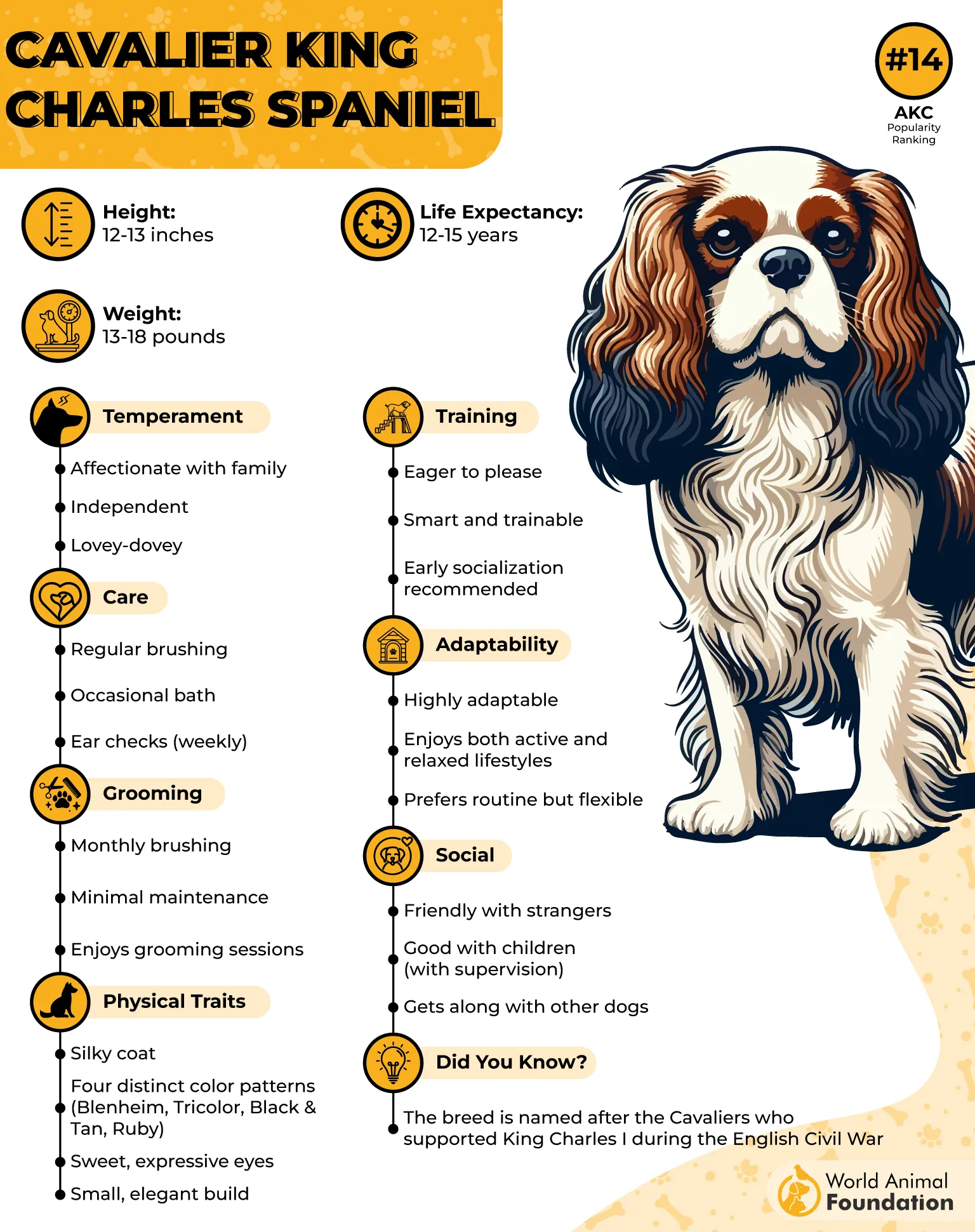
Grooming needs: Moderate; silky coat needs regular brushing
Energy level: Moderate; playful but not hyperactive
Exercise needs: Daily short walks and light play
Separation anxiety signs: Whining, scratching doors, or restless pacing
To encourage independence, start crate training early and introduce gradual alone time. Cavaliers thrive with comforting supplies like soft bedding, interactive treat dispensers, and calming background sounds. Keep departures low-key to help them associate alone time with safety rather than stress.
5. Lhasa Apso
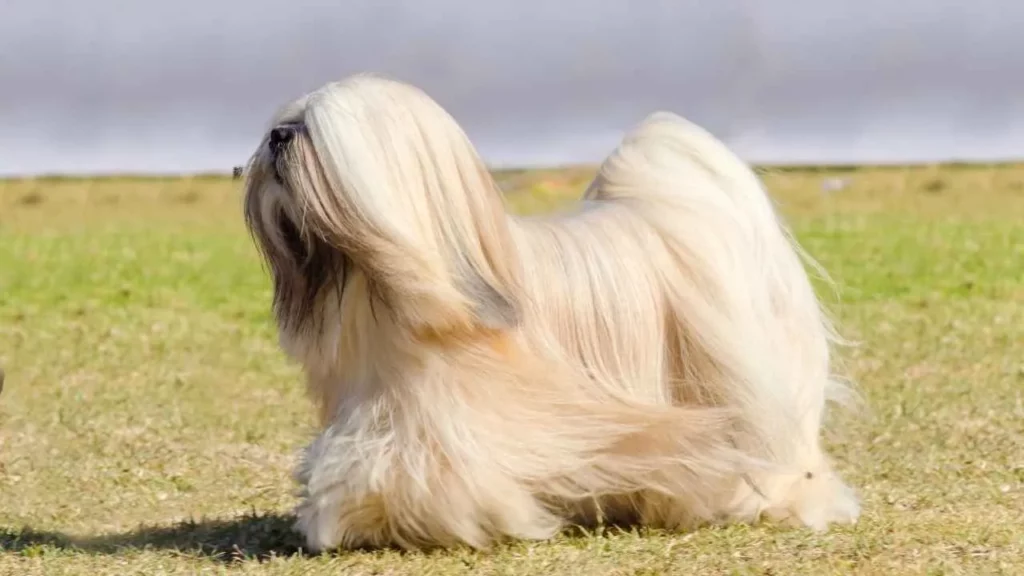
This breed could write the book on self-reliance with a side of sass. The Lhasa Apso has been bred for centuries as a watchdog in monasteries, which explains their calm, watchful independence today. They’re perfectly fine ruling the house while you’re at work.
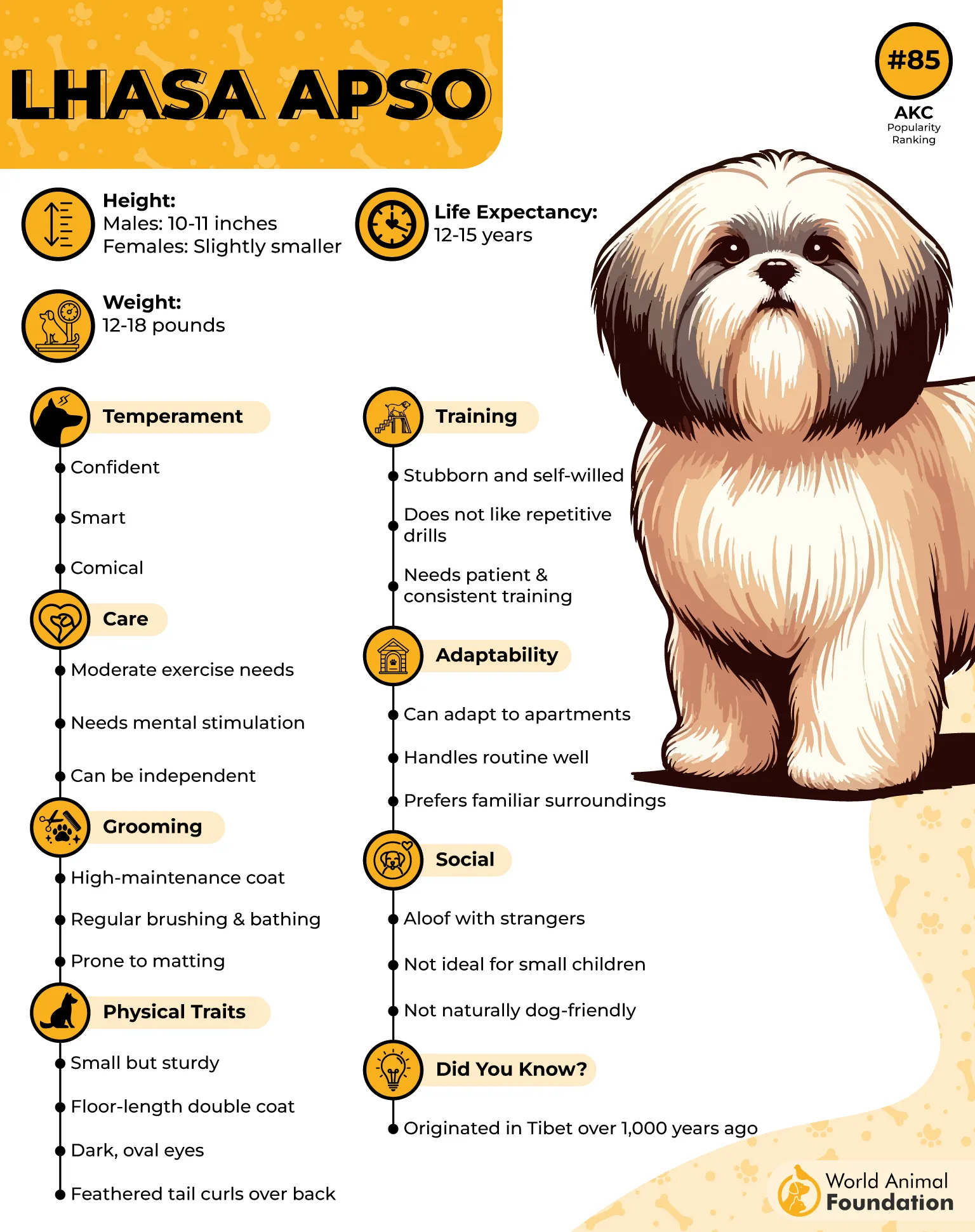
Grooming needs: High if coat kept long; low if clipped short
Energy level: Moderate; enjoys bursts of play
Exercise needs: Short walks and indoor play sessions
Separation anxiety signs: Guarding behaviors or stubbornness when you return
Training a Lhasa Apso to live independently starts with setting clear boundaries and rewarding calm behavior.
Provide elevated perches, puzzle feeders, and sturdy chew toys to keep their sharp minds occupied. They appreciate consistency and thrive in a space that feels like their own kingdom.
6. Bullmastiff
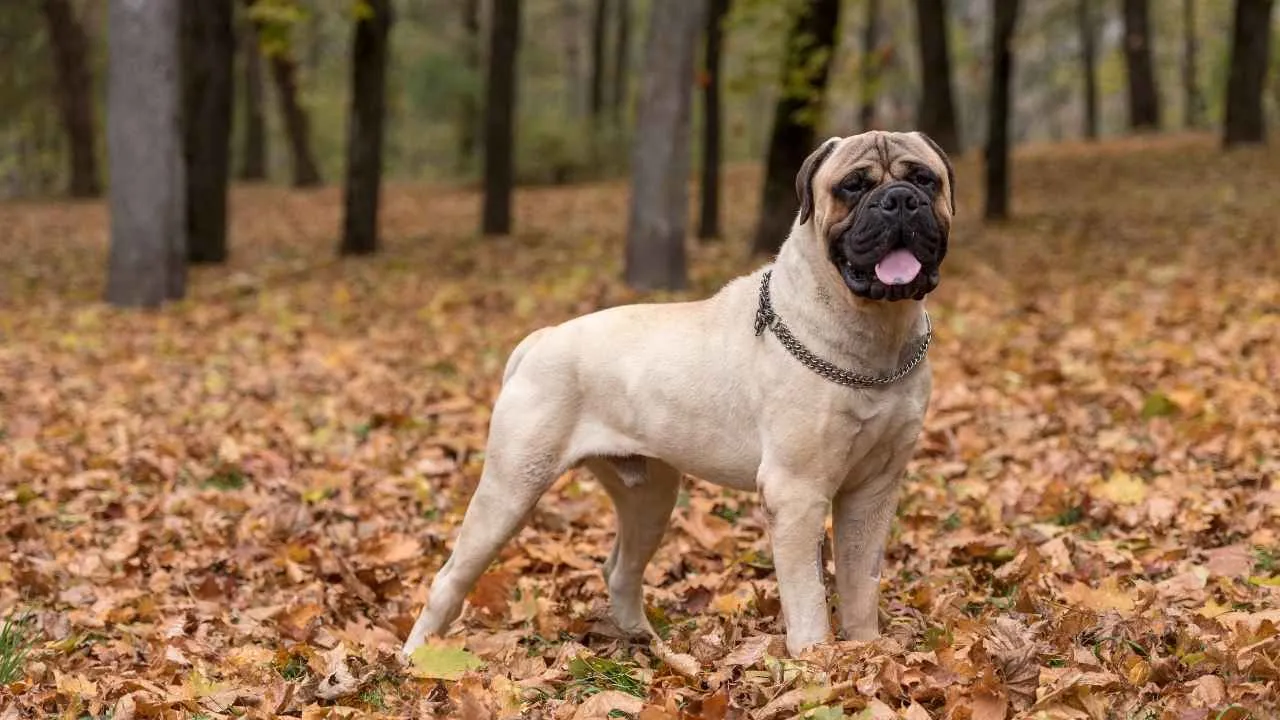
Imagine a gentle giant who would rather nap than nag—that’s the Bullmastiff. Despite their imposing size, they’re famously low-energy and surprisingly content with limited activity, making them ideal companions for professionals with demanding schedules.
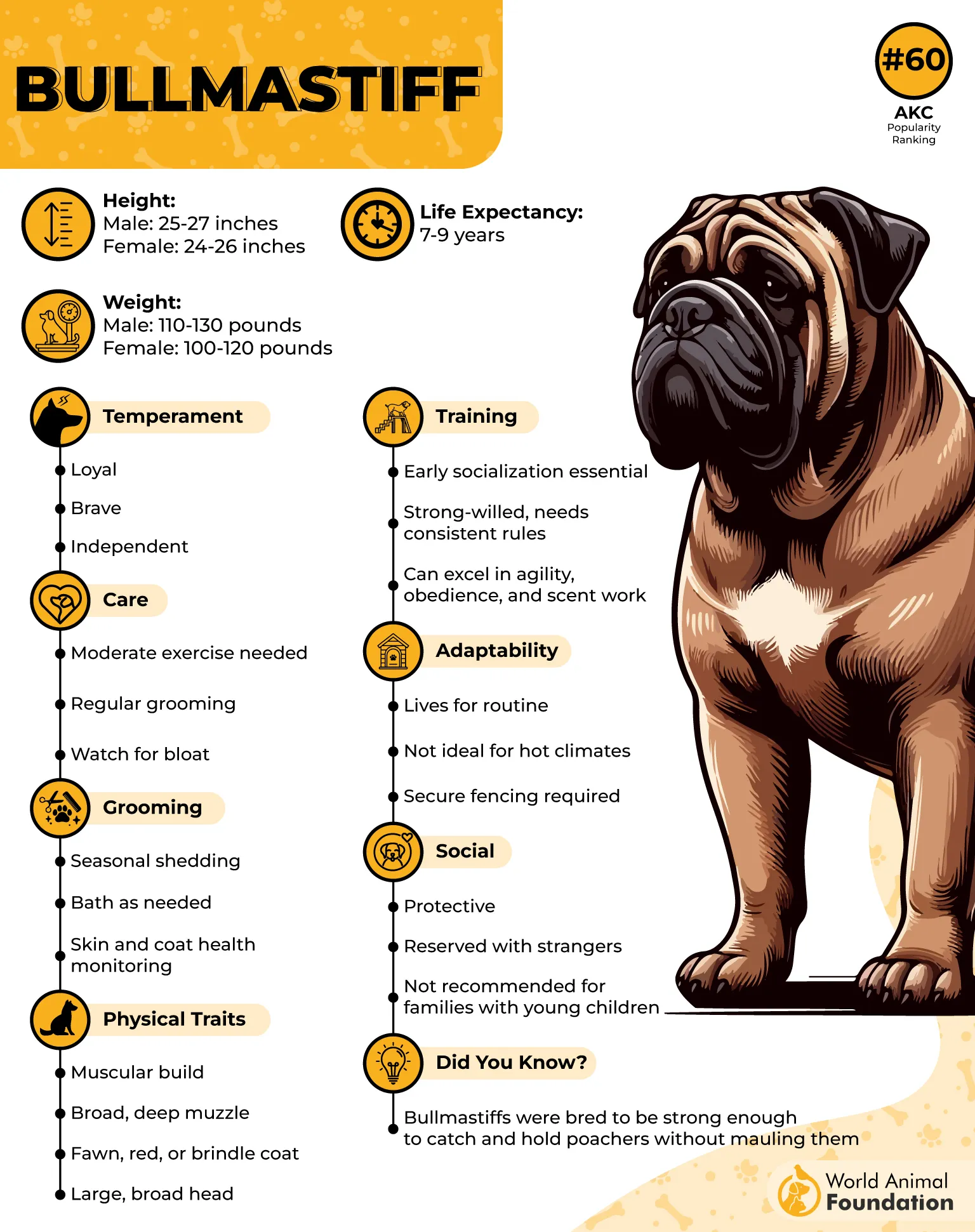
Grooming needs: Very low; short coat requires minimal care
Energy level: Low
Exercise needs: Short daily walks are enough
Separation anxiety signs: Drooling, pacing, or heavy sighing
Purina suggests that to help a Bullmastiff feel secure while you’re away, focus on early socialization and calm reinforcement training.
Equip them with orthopedic mats, durable chew toys, and slow feeders to manage their large appetite and boredom. With the right setup, this breed becomes a peaceful housemate even during long workdays.
7. Shar Pei
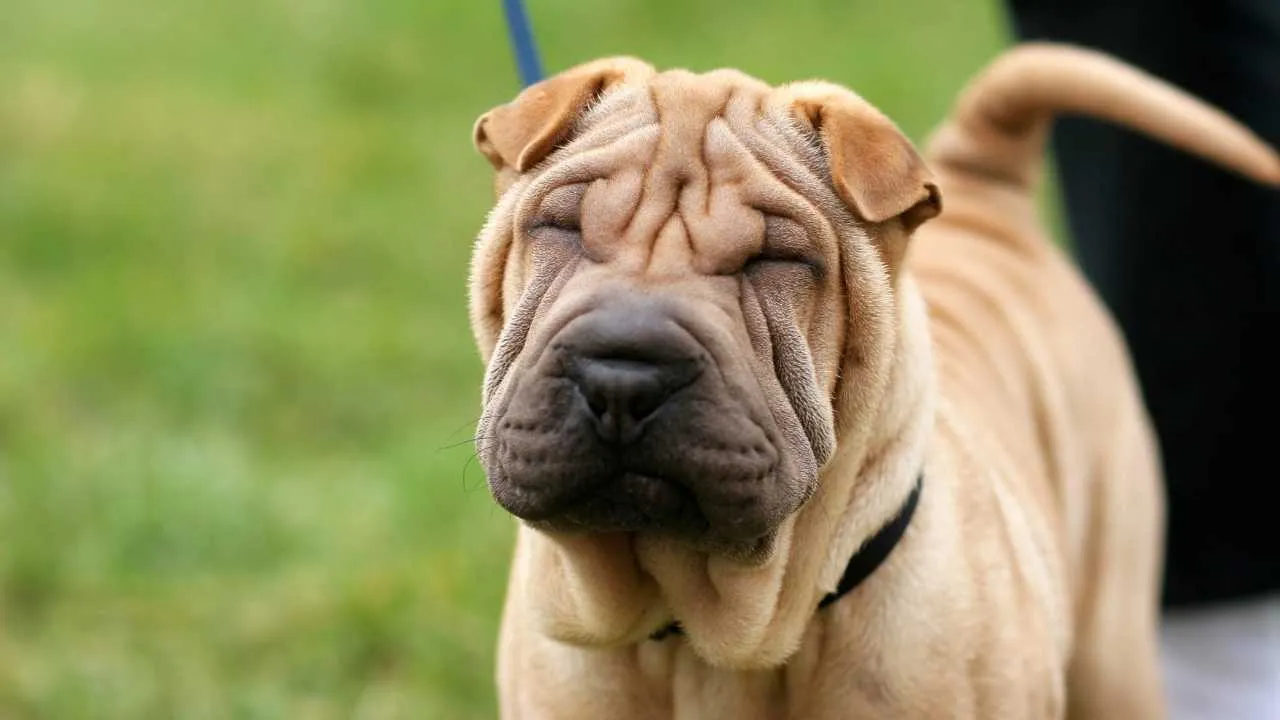
If dogs had poker faces, the Shar Pei would win every hand. Calm, dignified, and fiercely independent, they don’t demand constant attention, which makes them a solid match for busy professionals. Their loyalty is strong but not clingy, giving you balance at home.
Grooming needs: Low; short, bristly coat with occasional brushing
Energy level: Moderate; steady, not frantic
Exercise needs: Daily walk and light play
Separation anxiety signs: Pacing or stubborn refusal to eat
Hills Pet insists that training a Shar Pei for independence is all about consistency and confidence. Provide them with sturdy chew toys, a quiet resting corner, and a clear routine to reduce stress. This breed values calm environments and quickly learns how to manage alone time.
8. Chow Chow
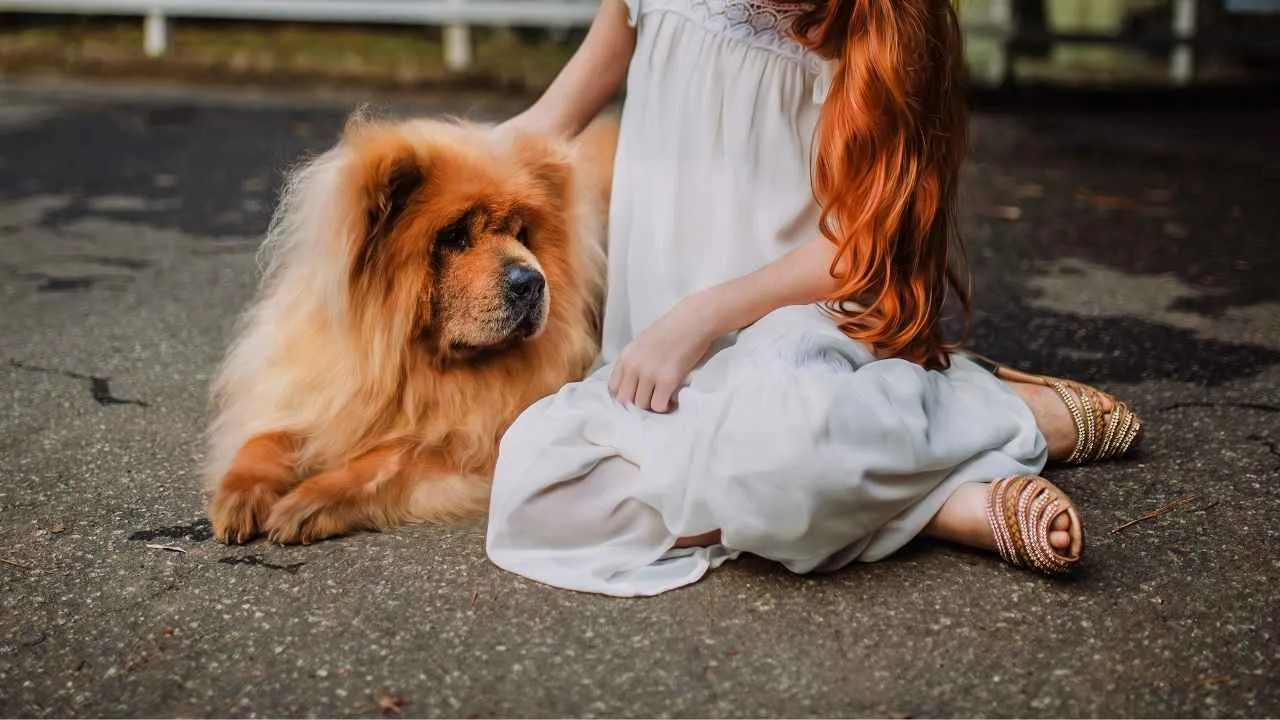
Think of the Chow Chow as the cat disguised in a dog’s body—aloof, independent, and perfectly happy entertaining themselves while you’re at work. Their majestic mane and stoic personality make them both stunning and low-maintenance companions.
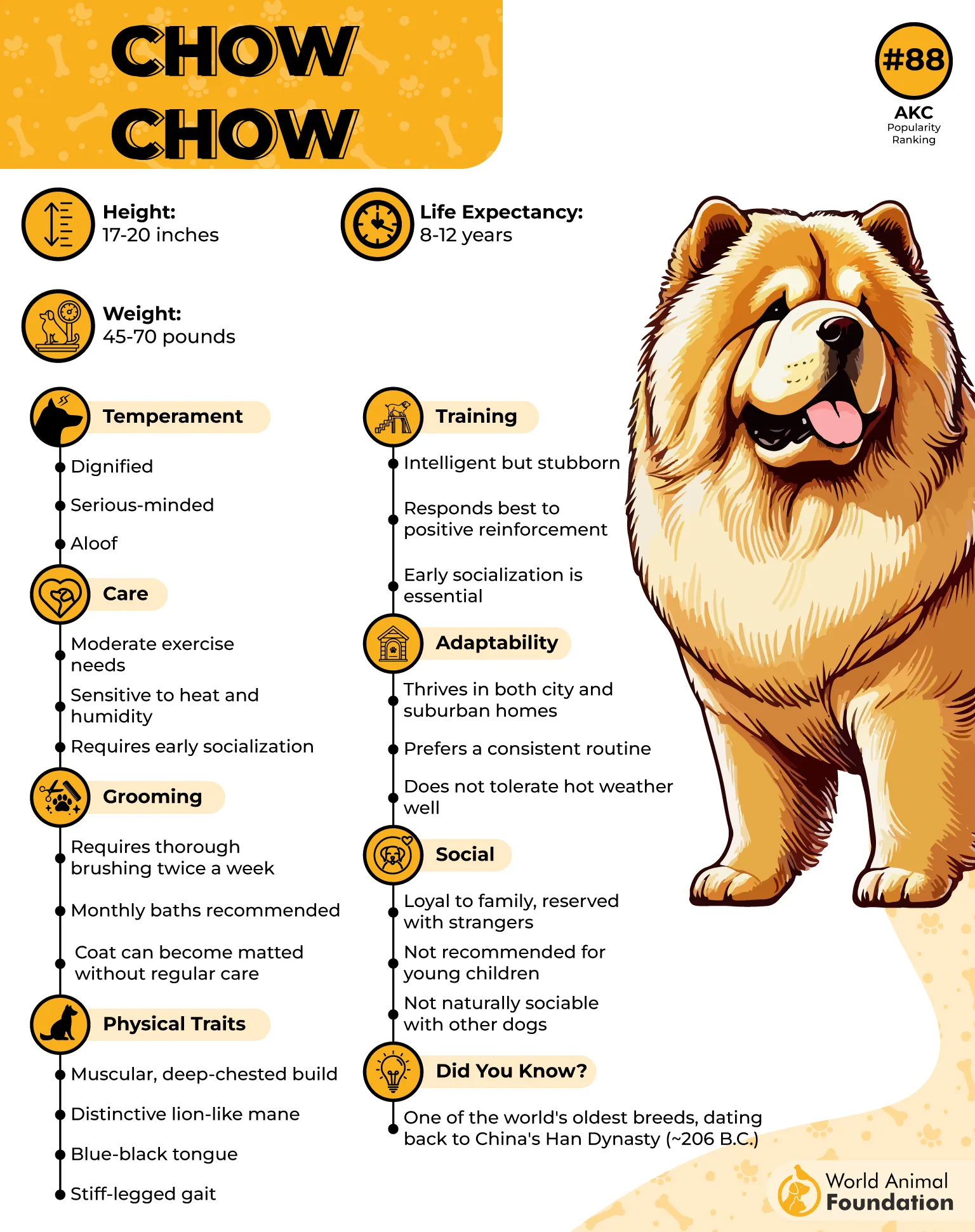
Grooming needs: Moderate to high; regular brushing for a thick coat
Energy level: Low to moderate
Exercise needs: One or two calm daily walks
Separation anxiety signs: Withdrawn behavior or sudden vocalization
Independence training for a Chow Chow involves positive reinforcement and early socialization.
Equip them with cooling mats, grooming tools, and puzzle feeders to keep them comfortable and engaged. With their self-sufficient temperament, they’re often less demanding than many smaller breeds.
9. Chihuahua
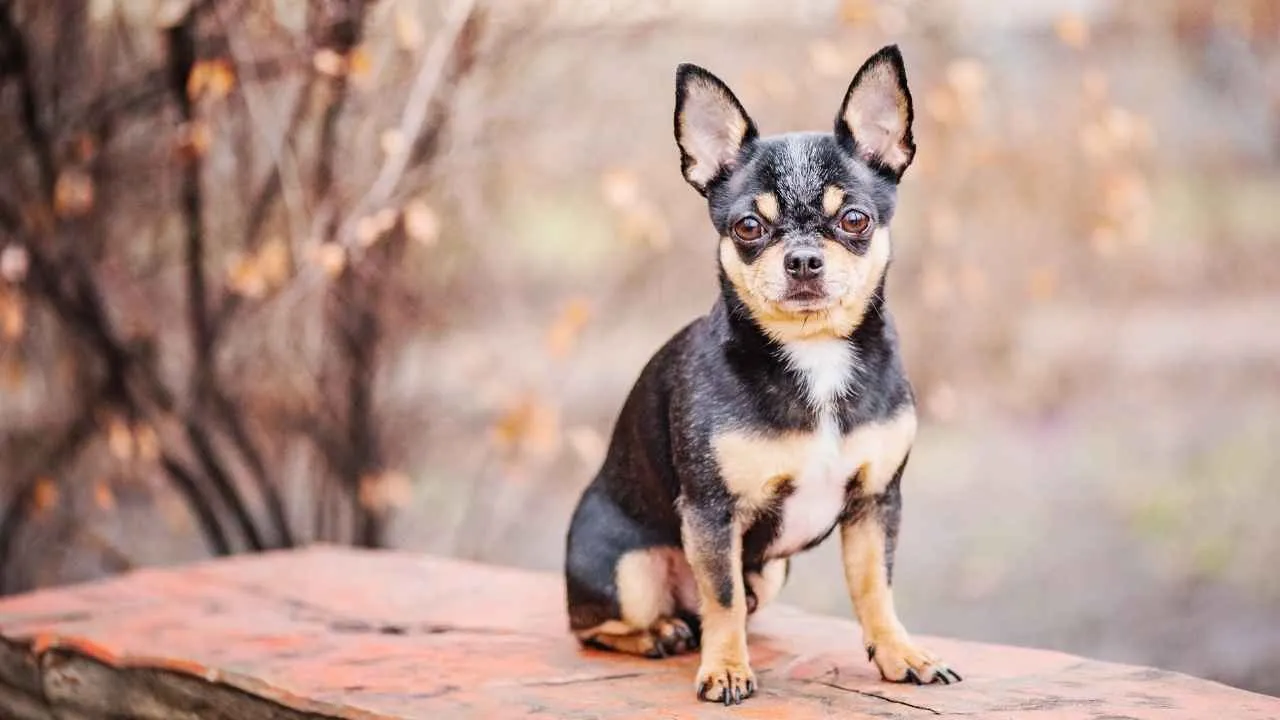
Don’t be fooled by their pint-sized frames—Chihuahuas have larger-than-life personalities paired with surprising adaptability.
While they adore their humans, they’re also comfortable snuggling into cozy spaces when left alone. This balance makes them ideal for professionals in smaller apartments.
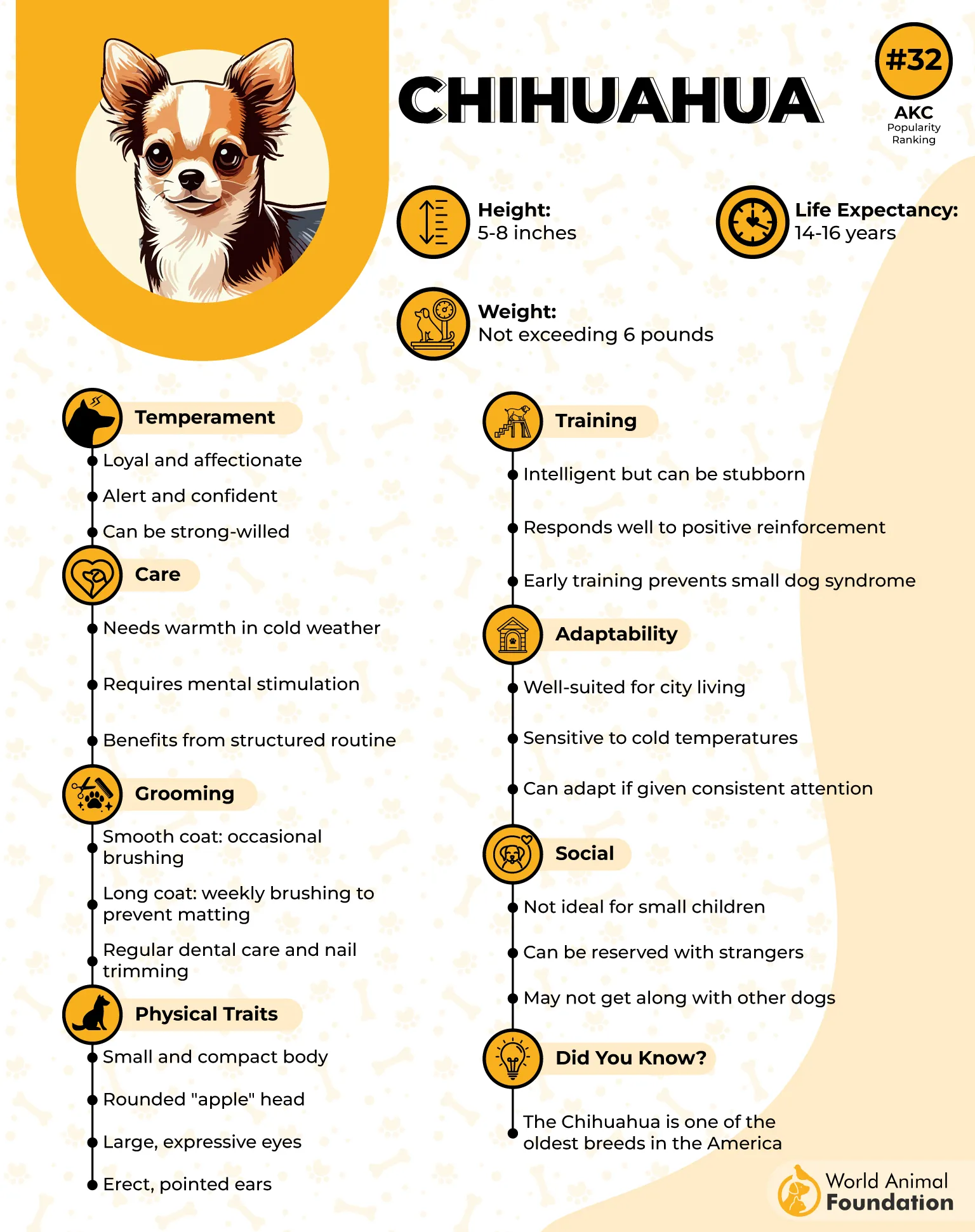
Grooming needs: Low; smooth coats need minimal brushing
Energy level: Moderate bursts, but easily satisfied indoors
Exercise needs: Short daily walks or indoor play
Separation anxiety signs: Barking, trembling, or destructive chewing
Training a Chihuahua to enjoy independence requires patience and gentle consistency. Provide them with soft blankets, elevated perches, and interactive toys to channel their energy. With the right environment, they’ll spend the day happily awaiting your return without fuss.
FAQs
1. Which dog breeds are happiest when left alone for long hours?
Breeds with an independent nature and laid back demeanor—like Greyhounds, Basset Hounds, Bullmastiffs, and Chow Chows—tend to be more content during long hours alone. These dogs often enjoy time sleeping and require less mental stimulation than high-energy breeds.
2. Can certain dog breeds handle being home alone without getting anxious?
Yes, some breeds are naturally better at handling solitude. Dogs such as the Shar Pei, Lhasa Apso, and French Bulldog can stay calm when left alone, especially if provided with puzzle toys, regular exercise, and early training to prevent separation anxiety.
3. How can I choose a dog that fits my busy work schedule?
Look for a breed of dog that matches your lifestyle—lower energy, adaptable to small spaces, and satisfied with a good walk. Research thoroughly and consider your home size, availability for quality time, and whether you’ll use a dog walker.
Conclusion
Choosing the right breed of dog is about balancing your lifestyle with your four-legged friend’s needs. While we’ve highlighted nine amazing breeds, there are other breeds like the Boston Terrier, Bernese Mountain Dog, Shiba Inu, and Miniature Schnauzer that can also make a great companion for busy dog owners.
Whether you prefer large dogs with a laid-back demeanor or a tiny dog suited to small spaces and city life, remember that every pet needs mental stimulation, regular exercise, and quality time. Even greyhounds with their independent nature and love of time sleeping still enjoy a good walk.
As a dog lover, consider hiring a dog walker, investing in puzzle toys, and making sure your dog’s happiness doesn’t suffer during long periods away. With properly trained habits and enough human company, any puppy, older dog, or furry friend can thrive—even after a long day apart.


